Welcome to our blog about the best vegetables to grow for beginners in today’s time. You LEARN THE BENEFITS in general & also for 11 DIFFERENT VEGETABLES!
Asking IF IT IS WORTH GROWING YOUR VEGETABLES AT HOME. Know THE EFFORTS ARE WORTH IT!!
It’s BENEFICIAL TO GROW YOUR OWN FOOD! There are many environmental benefits and health benefits when you harvest your vegetables.
Our words are coming from YEARS OF GARDENING EXPERIENCE of our team. The wisdom you gain here is valuable!
Know:
- Benefits of growing vegetables
- & should you grow them using seeds or transplants?
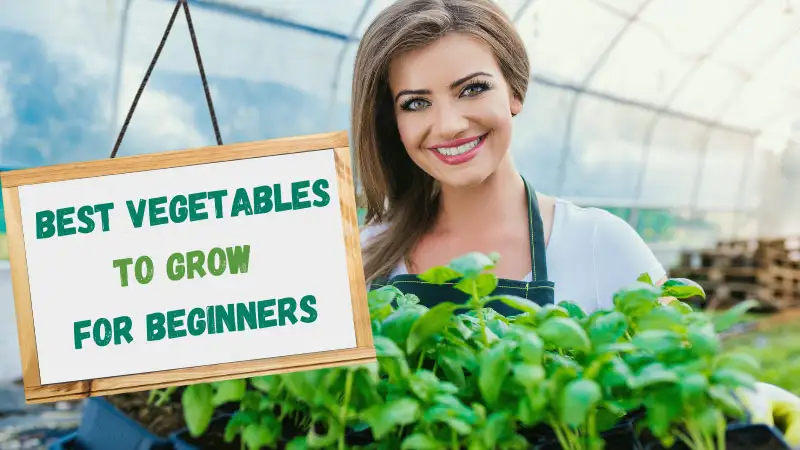
What Are the Benefits of Growing Vegetables?
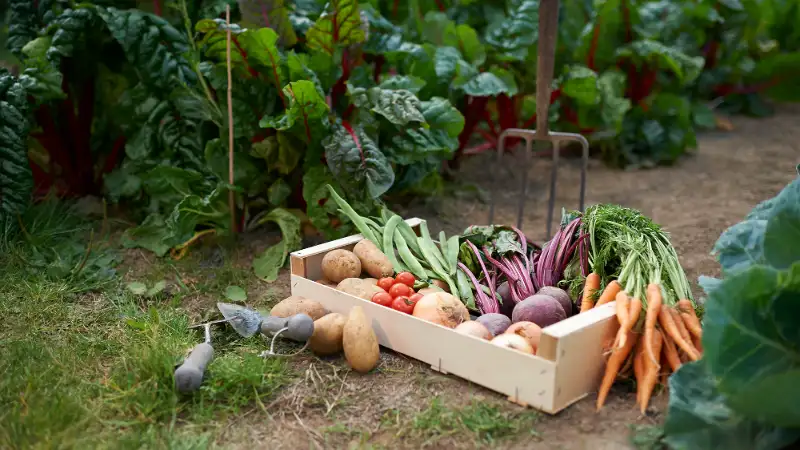
Producing vegetables has numerous benefits, both for health and the environment, as follows:
- One of the primary benefits is having access to FRESH VEGETABLES. That is NUTRIENT-RICH PRODUCE. You control the number of pesticides to get as natural food as possible.
- Another benefit is the POTENTIAL TO SAVE MONEY. Buying products from the grocery store can be expensive. Especially if you are purchasing organic food.
- Vegetable gardening has a POSITIVE IMPACT ON THE ENVIRONMENT. Producing vegetables at home USES FEWER RESOURCES. It has a SMALLER CARBON FOOTPRINT than industrial farming. It can also help to REDUCE FOOD WASTE, as you can harvest what you need.
11 Best Vegetables to Grow for Beginners
1. Radishes

Radishes are TYPE OF ROOT VEGETABLE that are SMALL IN SIZE, with most varieties 2-3 inches in diameter. They come in a range of bright colors besides WHITE.
They are a FAST-GROWING CROP, with some varieties taking as little as THREE WEEKS TO MATURE. They are EATEN RAW or COOKED and used in various dishes, including SALADS. You plant radish seeds at the beginning of spring or fall and do well in cool weather.
The benefit of growing radishes is they are FAST and EASIEST VEGETABLES to GROW. Also, they are the easiest vegetables to maintain. They are a great choice for beginners or those with limited gardening space.
Radishes are also a NUTRITIOUS and low-calorie addition to any diet.
2. Potatoes

Potatoes are POPULAR VEGETABLES for home gardens Due to their VERSATILITY. And also due to their ability to grow in a variety of climates. They can be cooked in various ways, including BOILING, BAKING, ROASTING, and FRYING.
They are GOOD SOURCE OF VITAMINS, MINERALS, and FIBER. Potatoes are planted in the spring or early summer. They require CONSISTENT MOISTURE.
The benefit of growing potatoes is they are RELATIVELY INEXPENSIVE TO GROW. They are favorite vegetables that can be stored several months after harvest if KEPT IN A COOL, DRY PLACE.
Growing your potatoes also allows you to CHOOSE FROM A WIDE RANGE OF VARIETIES. It includes HEIRLOOM and specialty types that may not be available at supermarkets.
3. Zucchini

Zucchini is a SUMMER SQUASH. They are the easiest vegetables to grow and are suitable for home gardens. These plants GROW QUICKLY and produce abundant fruit in a short period.
It can be COOKED IN A VARIOUS WAYS and is a GREAT ADDITION TO MANY DISHES. These plants are the easiest vegetables to care for.
The perfect time to plant zucchini depends on your location. But generally, it is best to plant them in spring after the last frost date has passed. Zucchini is a NUTRITIOUS and TASTY ADDITION to any home garden.
It provides many health benefits, including high fiber content. It also has a GOOD SOURCE OF VITAMINS and MINERALS.
4. Squash

Squash is a TYPE OF VEGETABLE THAT IS POPULAR in home gardens. It’s because of its EASE OF CULTIVATION and versatility in cooking. There are many different types of squash.
It includes SUMMER SQUASH such as ZUCCHINI and PATTYPAN. And WINTER SQUASH, such as ACORN and BUTTERNUT.
Squash can be cooked in different ways, including ROASTING, BAKING, GRILLING, and FRYING. It is a DELICIOUS and NUTRITIOUS ADDITION to many dishes. You take care of these plants with ease.
The perfect time to plant squash depends on your location. The OPTIMUM TIME to plant them in the SPRING AFTER THE LAST FROST DATE has passed. Squash is a GREAT CHOICE due to its high fiber and nutrient content.
5. Spinach
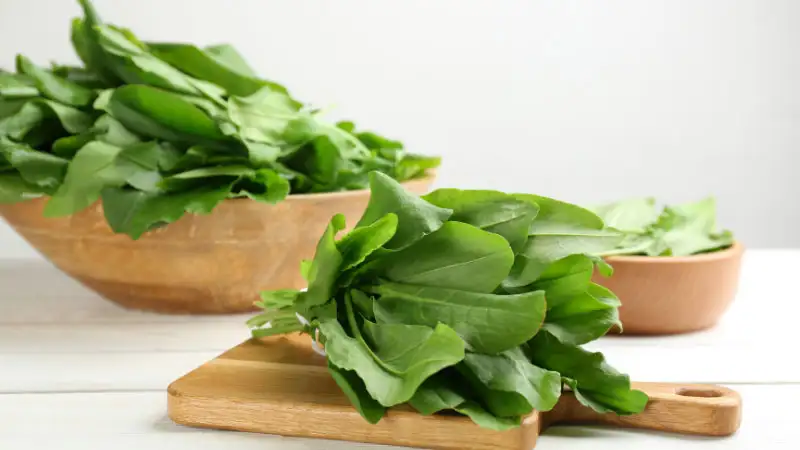
Spinach is the LEAFY GREENS that are high in nutrients and low in calories. It is a good source of VITAMINS like VITAMIN K, VITAMIN A, VITAMIN C, FOLATE, MANGANESE, and IRON. Spinach CAN BE PLANTED IN THE SPRING or FALL.
It is popular among first-time gardeners at home because it is the EASIEST VEGETABLES to grow. It CAN BE GROWN IN CONTAINERS or on the GROUND. Some of the benefits of growing spinach in a home garden include
- having a FRESH and HEALTHY SOURCE OF PRODUCE,
- SAVING MONEY on grocery bills,
- and being ABLE TO CONTROL THE GROWING CONDITIONS
They ensure the best quality of the spinach.
6. Lettuce
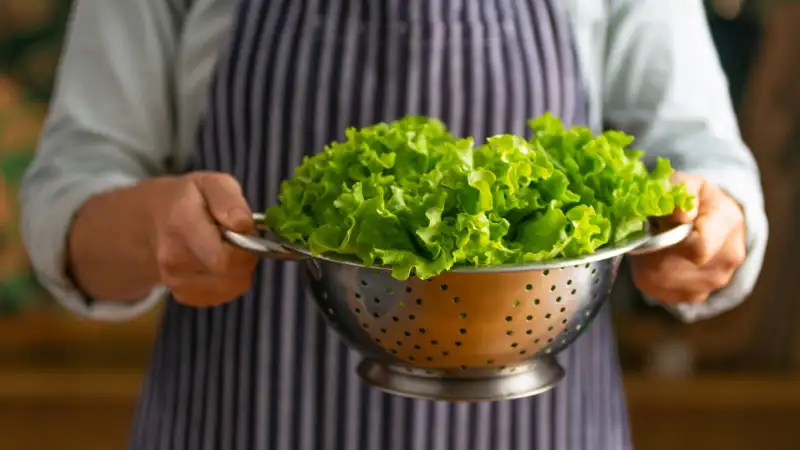
Lettuces are LEAFY GREENS that are LOW IN CALORIES and HIGH IN NUTRIENTS. It has VITAMIN K, VITAMIN A, and VITAMIN C. It is also a popular vegetable as it is the EASIEST VEGETABLES TO GROW.
It CAN BE GROWN IN CONTAINERS or ground. To grow lettuce, you PLANT THEM IN THE SPRING or FALL.
Some of the benefits of growing leaf lettuces in a home garden include:
- having a FRESH and HEALTHY SOURCE OF PRODUCE
- and BEING ABLE TO CONTROL THE GROWING CONDITIONS
They ensure the best quality of the lettuce.There are LETTUCE VARIETIES that CAN BE GROWN. It includes LOOSE LEAF, BUTTERHEAD, and ROMAINE. They provide a range of flavors and textures.
7. Peppers

Peppers are also popular because they CAN ADD A BURST OF FLAVOR and COLOR TO A VARIETY OF DISHES. There are DIFFERENT TYPES OF PEPPERS, including SWEET PEPPERS and HOT PEPPERS.
Peppers are GOOD SOURCE of VITAMIN C and OTHER NUTRIENTS. SUNLIGHT and WARMTH are ESSENTIAL for pepper growth. They can be grown EASILY in the LATE WINTER or EARLY SPRING UNDER PARTIAL SHADE.
Some of the benefits of growing peppers at home include
- having a FRESH and HEALTHY SOURCE OF PRODUCT
- and CONTROLLING THE GROWING CONDITIONS.
Peppers can be grown in a variety of different colors and shapes. It includes BELL PEPPERS, CHILI PEPPERS, and JALAPENO PEPPERS. They provide a range of flavors and textures.
8. Green Beans

Green beans are popular because they are EASIEST VEGETABLE TO GROW IN A HOME GARDEN. They have a CRISP, CRUNCHY TEXTURE and A MILD, SLIGHTLY SWEET FLAVOR.
Both bush and pole beans are GOOD SOURCE OF VITAMINS and MINERALS. It has VITAMIN C, VITAMIN K, and POTASSIUM. You harvest them in various garden soil types, and they PREFER A FULL SUN.
Growing beans, bush beans, or pole are usually PLANTED IN THE SPRING or SUMMER. They harvest in about two months. They are a common choice for every first-time gardener at the home garden.
This is due to the reason are RELATIVELY EASY VEGETABLES and MAINTAIN. Also, green beans PROVIDE A NUTRITIOUS and TASTY ADDITION to meals.
9. Beets
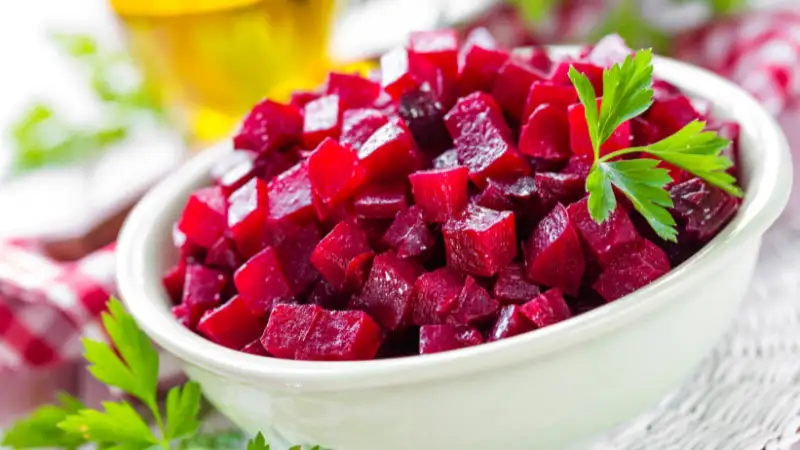
Beets are ROOT VEGETABLES that are easy to grow vegetables in a home garden. They have a SWEET, EARTHY FLAVOR and A TENDER, CRISP TEXTURE.
Beets are GOOD SOURCE OF VITAMINS and MINERALS. It has FOLATE, MANGANESE, and POTASSIUM. They can be grown in various soil types and PREFER COMPLETE SUN.
Beets are usually PLANTED IN THE SPRING or SUMMER, and they harvest in about three months. They are also popular among beginner gardeners. The reason is they are RELATIVELY EASY VEGETABLES TO MAINTAIN.
They provide a NUTRITIOUS and TASTY ADDITION to meals. Beets CAN BE EATEN RAW or COOKED, and they can also be pickled or preserved.
10. Broccoli
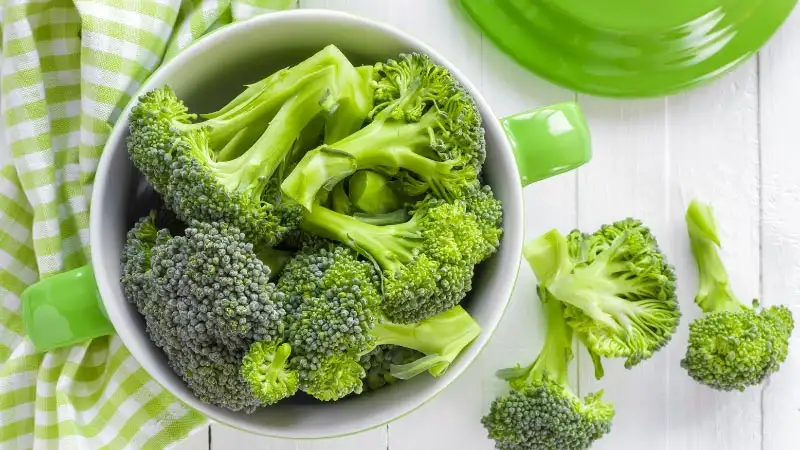
Broccoli with COOL GROWING SEASON is easy to grow in a home garden. It has a CRUNCHY TEXTURE and A SLIGHTLY BITTER, NUTTY FLAVOR.
Broccoli is a SOURCE OF VITAMINS and MINERALS. It has VITAMIN C, VITAMIN K, and POTASSIUM. It can be grown in various garden soil types and PREFERS FULL SUN.
Broccoli is usually PLANTED IN THE SPRING or FALL, and it harvests in about three months. It is also a popular vegetable among beginner gardeners. The reason is it is an EASY VEGETABLES TO GROW and MAINTAIN.
It provides a NUTRITIOUS and TASTY ADDITION to meals. Broccoli is EATEN RAW or COOKED and can also be frozen for later use.
11. Cucumber
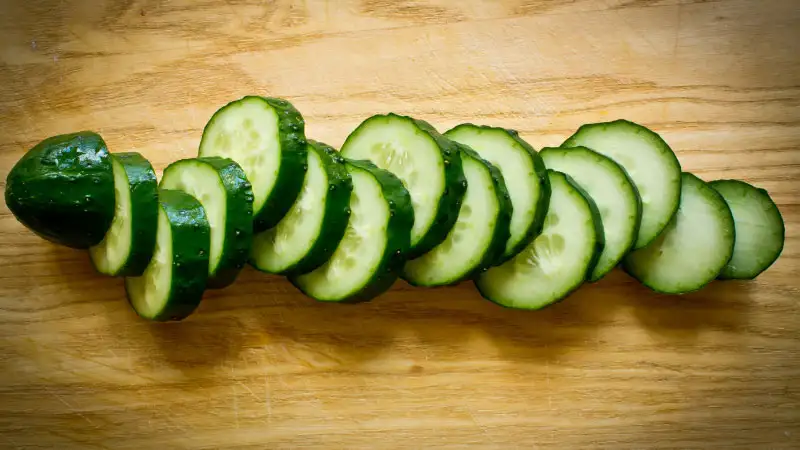
Cucumbers are a WARM-SEASON VEGETABLE that is easy to grow in a home garden. They have a CRISP, REFRESHING TEXTURE, and a MILD, SLIGHTLY SWEET FLAVOR.
Cucumbers are a GOOD SOURCE OF VITAMINS and MINERALS. They have VITAMIN C, VITAMIN K, and POTASSIUM. They can be grown in various soil types and PREFER A SUNNY LOCATION.
Cucumbers are normally PLANTED IN THE SPRING or SUMMER LONG. They harvest in about two months. They are popular among home gardens. The reason is they are the EASIEST VEGETABLES TO GROW and MAINTAIN.
They provide a NUTRITIOUS and TASTY ADDITION to meals. Cucumbers can be EATEN RAW or PICKLED. You also use it in SALADS, SANDWICHES, and other dishes.
Should You Grow Vegetables from Seed or Transplants?
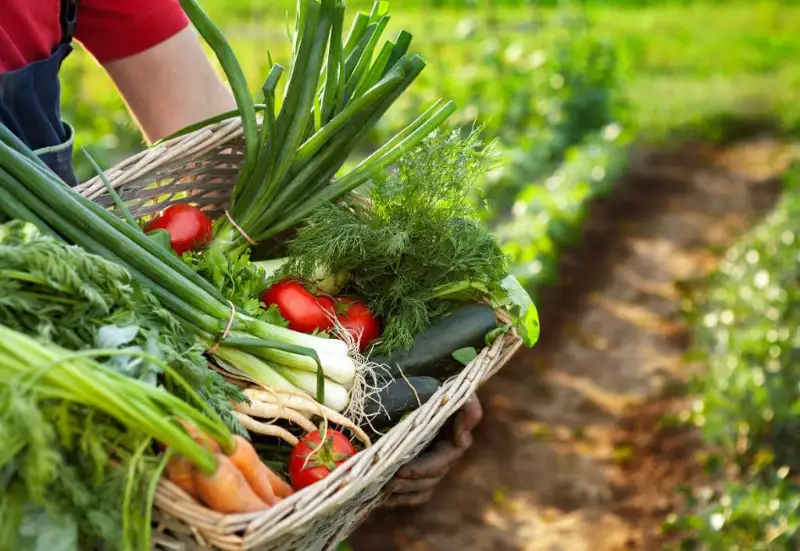
You can GROW ANY VEGETABLE FROM PLANT SEEDS. The reason is it is LESS EXPENSIVE than PURCHASING TRANSPLANTS. Starting vegetables from seed can be more time-consuming.
And it requires more patience, as it takes longer for seeds to germinate and grow into MATURE PLANTS. TRANSPLANTS ARE ALREADY ESTABLISHED YOUNG PLANTS. They can be easily used in the garden. It can SAVE TIME and EFFORT.
Transplants can be more expensive, and availability may be limited.CORN and BEANS & ROOT VEGETABLES, like CARROTS, BEETS, and RADISHES, should all be sown as seeds.
TRANSPLANTS OF TOMATOES, PEPPERS, and EGGPLANT should be sown. CUCUMBERS and SQUASH can be planted in any way using seeds or transplants.
FAQs about Best Vegetables To Grow For Beginners
1. What’s the quickest vegetable to grow?
Radishes are typically the quickest vegetable to grow, with a harvest time of about 3-4 weeks. Other fast-developing vegetables include growing lettuce, spinach, and arugula. They can be ready to harvest in about a month.
2. When should I start my vegetable garden?
The time to start a vegetable garden depends on your location. Grow cool-season vegetables, such as broccoli and lettuce, in the early spring. And grow warm-weather vegetables like peppers and squash in the late spring or early summer. Consider your region’s frost dates.
3. What not to plant with tomatoes?
It would help if you did not plant cabbage, broccoli, cauliflower, kale, Brussels sprouts, and kohlrabi with tomatoes. That is as companion plants with homegrown tomatoes. They can hinder the growth of tomato plants. These vegetable plants out-compete while growing tomatoes for the same nutrients.
What’s Next
We started by knowing the general benefits of growing vegetables. Then we jumped into the vegetables and learned their particular features plus benefits.
While mentioning when to plant them and their benefits as well. We next discussed how you should cultivate many vegetables using seeds or transplants.
If you are DESIRING TO GROW VEGETABLE AT YOUR HOME, consider looking upto AsterGardening for a more detailed article on this.
We are providing ALL INFORMATION RELATED TO EACH TYPE OF VEGETABLE. You experience happy gardening!
Also, if you like our article, PLEASE SHARE IT WITH YOUR FRIENDS AND FAMILY. We are always ready to serve you with loads of insights!
